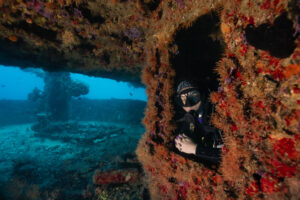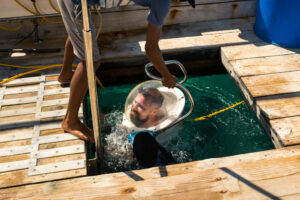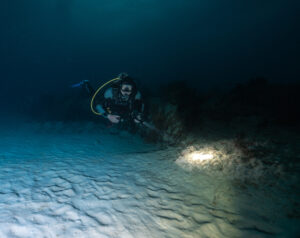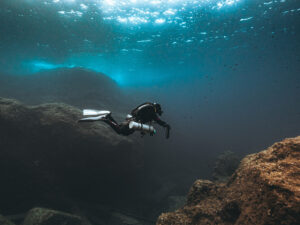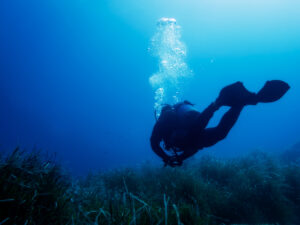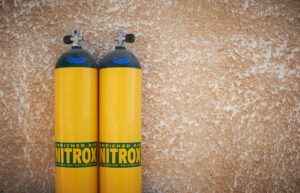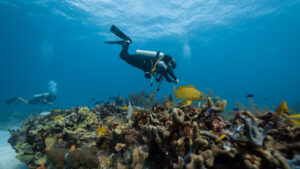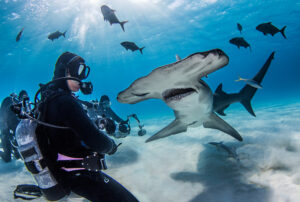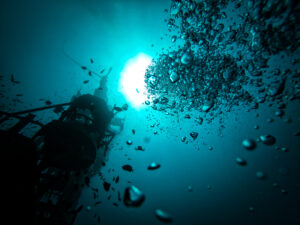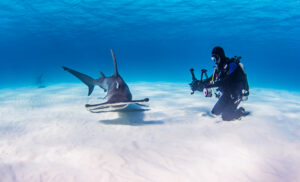What is a Triangular Dive Profile?
A “Triangular Profile” is a specific dive profile commonly used in scuba diving, characterized by three distinct stages: the descent, the bottom time, and the ascent. This diving method is so named due to the graphical representation of the dive, which forms a triangular shape when the diver’s depth is plotted against time.
Descent
The first leg of the triangular profile is the descent. Typically, divers descend at a constant rate, aiming for a balance between speed and safety. Rapid descent can cause a variety of complications such as barotrauma, an injury caused by a change in air pressure, affecting the ears, sinuses, and lungs. Conversely, an overly slow descent may unnecessarily prolong exposure to cold water and consume a substantial portion of the diver’s air supply. The optimum descent rate varies depending on factors such as individual comfort, equipment, and dive conditions, but a widely accepted standard is approximately 18-20 meters per minute.
Bottom Time
The apex of the triangle is the ‘bottom time’, which refers to the period the diver spends at their maximum depth. Although this time can vary based on the specifics of the dive and the diver’s objectives, in a triangular profile, the bottom time is generally kept brief. This short duration helps limit nitrogen absorption into the body’s tissues, reducing the risk of decompression sickness (DCS), also known as “the bends”.
The brief bottom time also allows for a more extended exploration during the ascent phase. This is in contrast to square or multilevel profiles where more time is spent at maximum depth. The short bottom time in a triangular profile is particularly beneficial for deep dives, wreck dives, or when exploring a vertical structure such as a wall or a reef drop-off.
Ascent
The final leg of the triangular profile is the ascent, and it is here that this profile most significantly diverges from others. Instead of a rapid ascent to a decompression stop followed by a slower final ascent, a triangular profile features a single, slow, and constant ascent rate from the maximum depth to the surface or first decompression stop.
This slow ascent is advantageous for several reasons. It allows more time for off-gassing—the process where absorbed nitrogen is safely expelled from the body—thereby reducing the risk of DCS. It also provides ample opportunity for divers to observe and explore as they gradually ascend through different depth zones.
The ascent rate is typically slower than the descent, typically about 9-10 meters per minute until reaching the 10-meter mark, where it is further reduced to about 3 meters per minute. This slow ascent rate is especially crucial in the final 3 meters, often referred to as the ‘safety stop’, where divers pause for at least 3 minutes to allow any residual nitrogen to escape from the body.
Safety Considerations
While the triangular profile is a widely used and generally safe diving method, it is not without risks. As with all diving profiles, strict adherence to safety procedures is paramount. This includes monitoring the air supply, staying within the no-decompression limits, and maintaining an appropriate ascent rate.
Even with these precautions, divers following a triangular profile are still susceptible to DCS and other diving-related ailments. For this reason, divers should always use a dive computer or decompression tables to plan their dives and decompression stops, if necessary.
Furthermore, it’s crucial to remember that different dive profiles are suited to different types of dives. While the triangular profile offers certain benefits, other profiles may be more suitable depending on the dive site, conditions, and objectives. Always plan your dives carefully and consult with experienced divers or dive instructors when considering a new type of dive profile.
Key Takeaways
The triangular dive profile, with its constant descent, brief bottom time, and slow, constant ascent, offers a unique approach to scuba diving that blends safety and exploration. This profile allows divers to experience a wide range of depth zones during the ascent, while also prioritizing safety by minimizing nitrogen absorption and maximizing off-gassing opportunities.
While the triangular profile has its benefits, it’s important to remember that no single dive profile is perfect for every situation or diver. Factors such as diver experience, fitness level, dive site characteristics, and specific objectives must be taken into account when planning a dive. Therefore, while the triangular profile is a valuable tool in a diver’s repertoire, it should be used judiciously and as part of a broader understanding of safe diving practices.
Nevertheless, the triangular profile’s balanced approach to descent, bottom time, and ascent has made it a popular choice among both recreational and professional divers. The inherent flexibility of the profile allows it to be adapted to a wide variety of diving scenarios, from deep sea exploration to recreational reef dives. This versatility, combined with a strong emphasis on safety, ensures that the triangular profile will continue to be a mainstay of scuba diving for years to come.
As with all aspects of scuba diving, education and training are crucial. Before attempting to dive using a triangular profile, divers should receive proper training from a certified dive instructor or institution. Furthermore, divers should always use appropriate safety equipment, including a reliable dive computer or decompression tables, to plan and monitor their dives.
The triangular profile is a vital part of the scuba diving world. With its unique approach to managing descent, bottom time, and ascent, it offers divers a safe and flexible way to explore the underwater world. By understanding and correctly implementing this dive profile, divers can enhance their diving experience while ensuring their safety.



